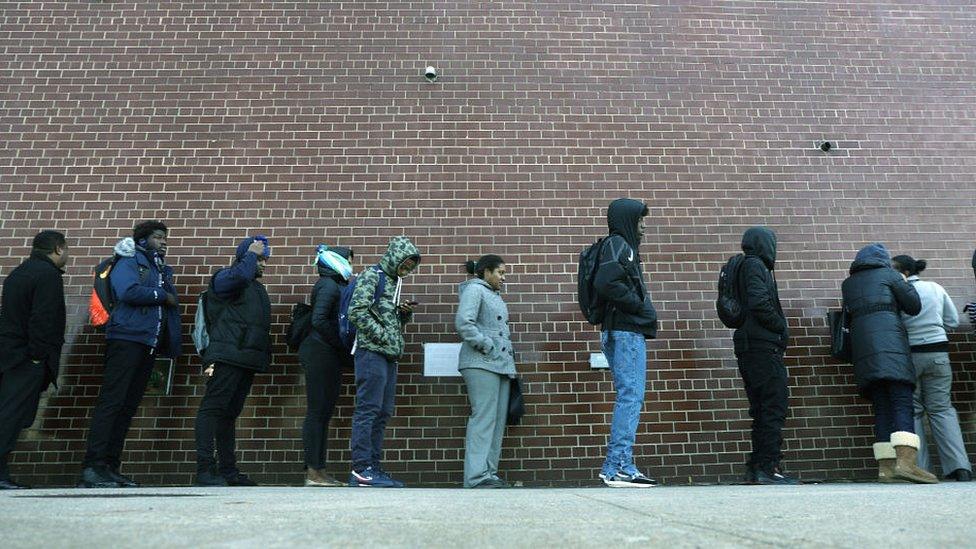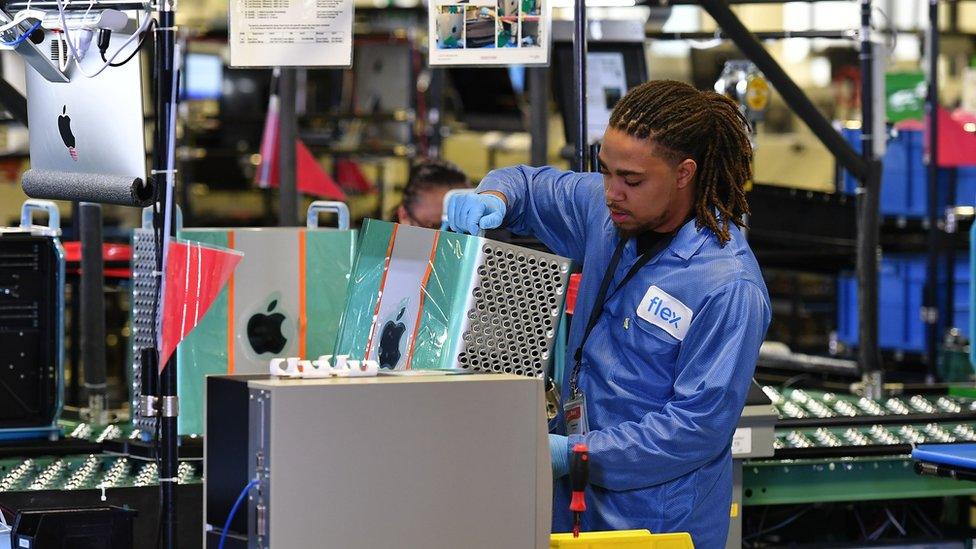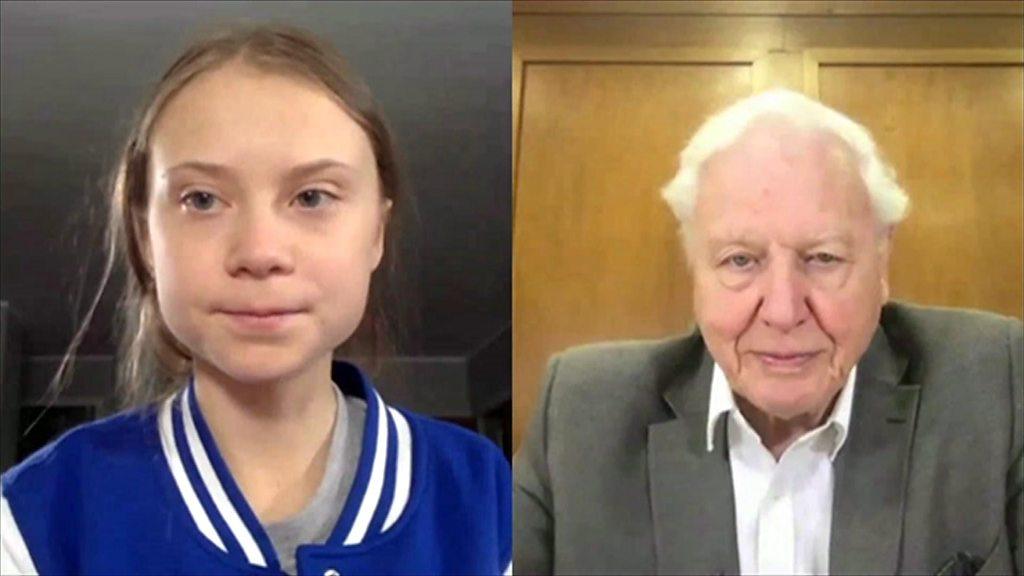Trump Davos 2020: US president's speech fact-checked
- Published
"We must reject the perennial prophets of doom" - Mr Trump
President Trump made a series of claims about his record in office - on the US economy and on the environment - during his speech to the World Economic Forum at the Swiss resort of Davos.
We've looked at some of them:
Claim: "The United States has among the cleanest air and drinking water on Earth."
Reality Check: Mr Trump has praised his administration's policies for improving air and water quality in the US before.
However, his critics point to steps that reverse environmental protection and to America's intended exit from the Paris climate agreement.
Air quality in the US ranks as 10th best in the world, according to the Environmental Performance Index, created by researchers at Yale and Columbia universities.
Drinking water in the US is named as joint top along with countries including the UK, Canada and Finland.
Claim: "The United States is in the midst of an economic boom - the likes of which the world has never seen before."
Reality Check: The annual rate of growth in gross domestic product (GDP) - the value of goods and services in the economy - has been between 2% and 3% under Mr Trump.
But under President Clinton, the annual growth rate was higher - reaching over 4%.

And if you look at the quarterly GDP growth rate, there was a period under President Obama, in 2014, when it reached 5.5%. That's not been matched during Mr Trump's term in office.
Claim: "Since my election, America has gained over seven million jobs."
Reality Check: According to government statistics, just over seven million jobs have been added since November 2016, when Mr Trump won the US election, although he didn't assume office until January 2017.
Barack Obama added 7.8 million jobs in his last three years in office.

People queuing to enter a New York job fair
And there has been job growth in the US for 110 consecutive months, with the Trump administration continuing an upward trend.
Claim: "The experts predicted a decade of very, very slow growth or maybe even negative growth, high unemployment and a dwindling workforce."
Reality Check: Mr Trump didn't give details about which experts he was referring to or precisely when the prediction was made. But the Congressional Budget Office in January 2016 predicted real GDP would grow by 2.7% in 2016 and by 2.5% in 2017, external. And it predicted that from 2018 to 2020, the economy would grow at an average annual rate of 2%.
As for jobs, the Bureau of Labor Statistics said in December 2015 jobs would grow at an average of 0.5% a year between 2014 and 2024 - about 7.9 million in total.
Claim: "After losing 60,000 factories under the previous two administrations... America has gained 12,000 new factories under my administration."
Reality Check: Mr Trump frequently highlights his success in growing the manufacturing sector and compared his record against that of his his predecessors, George W Bush and Barack Obama, in this speech.

Apple products being built in a US factory: Mr Trump says he's boosted manufacturing
At the start of 2001, compared with the end of 2016, there were about 54,000 more private manufacturing establishments (factories) in the US, according to the US Bureau of Labor Statistics.
In terms of new factories, the most recent statistics are for the second quarter of 2019.
And compared with when President Trump took office, in 2017, there were roughly 12,000 more manufacturing establishments.
Most of these are small businesses, with fewer than five employees.
The number of factories overall started to increase in 2013, during the Obama administration.
Claim: "Ten million people have been lifted off welfare in less than three years."
Reality Check: We don't know exactly which welfare programmes Mr Trump is referring to. The US has federal welfare programmes administered by individual states, which may supplement these with their own schemes.
We've looked at the biggest federal ones:
Two million fewer people received earned-income tax credit in 2019 than in 2016
More than six million (6,081,859) people lost their food-stamp benefits between January 2017 and October 2019
4.7 million fewer people were enrolled on Medicaid and Children's Health Insurance Programmes (Chip) in October 2019 than in January 2017
Nearly 219,000 fewer people were receiving supplementary security income, in November 2016 than in November 2019
But we don't know how many claimed more than one benefit, so it's difficult to reach an overall number of people "lifted off welfare" under President Trump.
The Trump administration has been looking to cut welfare programmes, external and introduce changes in how poverty is measured, which would mean some low-income households losing access to welfare assistance.
Claim: "Unemployment rates among African Americans have reached record lows."
Reality Check: The African-American unemployment rate hit 5.5% in September 2019, the lowest rate recorded since the US Labor Department started collecting these statistics, in 1972.
The unemployment rate has since risen slightly to 5.9%.
However, there is a disparity in weekly wages between racial groups. Black men on average earn 26% less than white men and the disparity between Hispanic men and white men is wider still, according to the latest official statistics.


- Published21 January 2020

- Published30 December 2019

- Published30 December 2019
